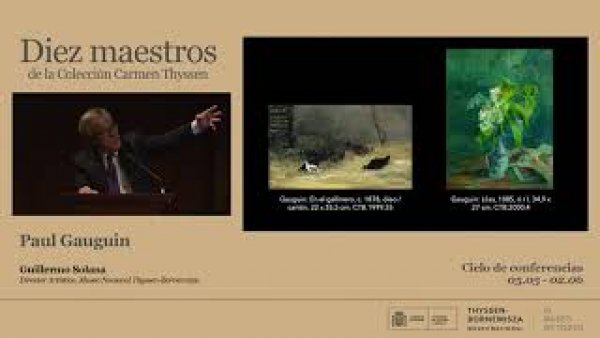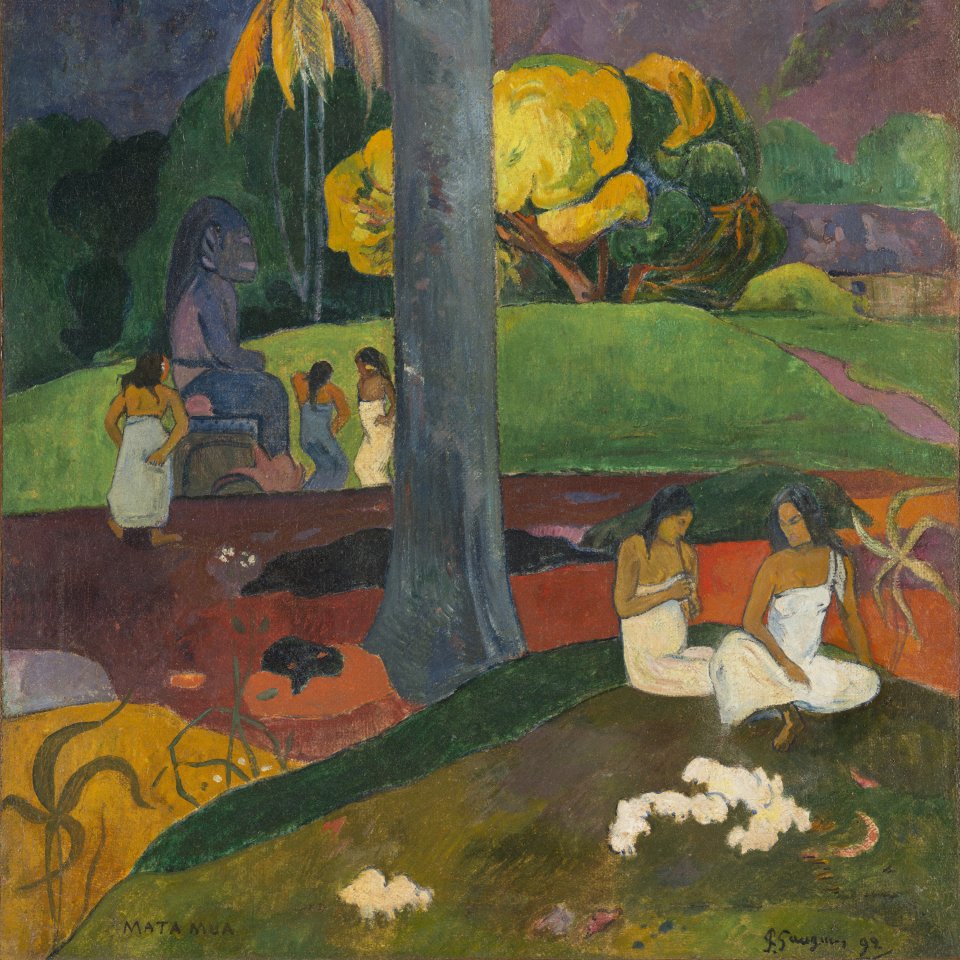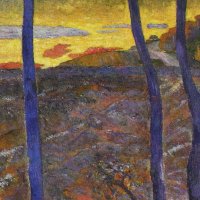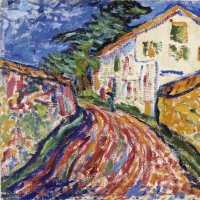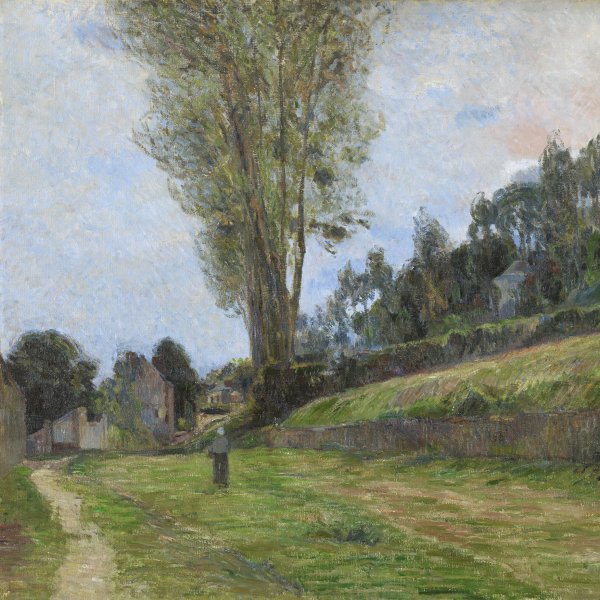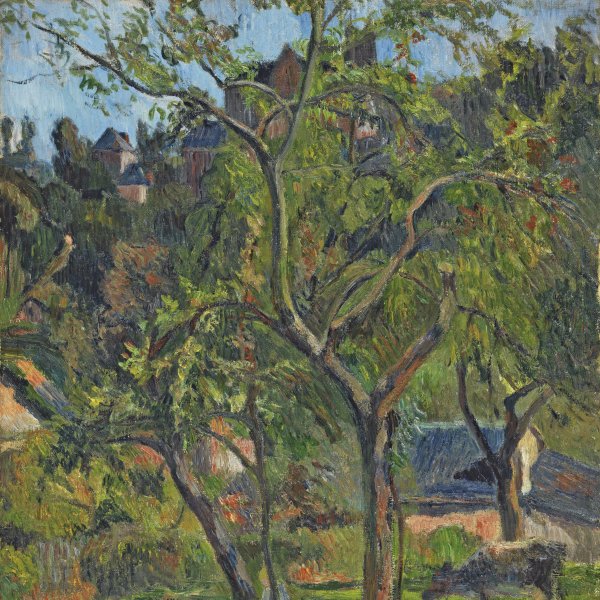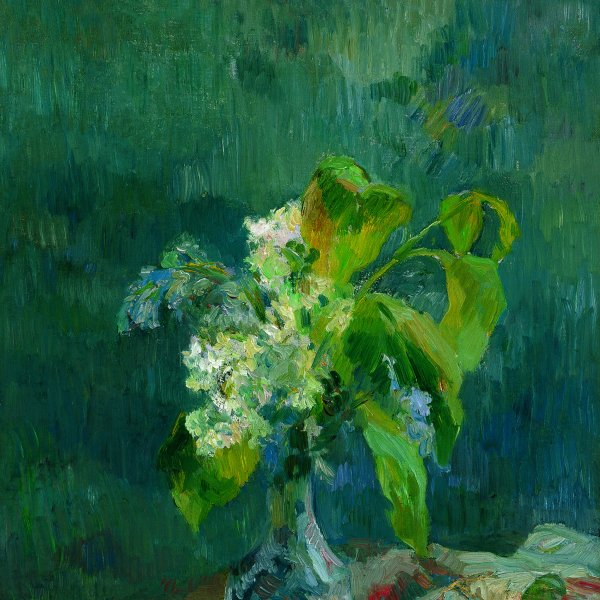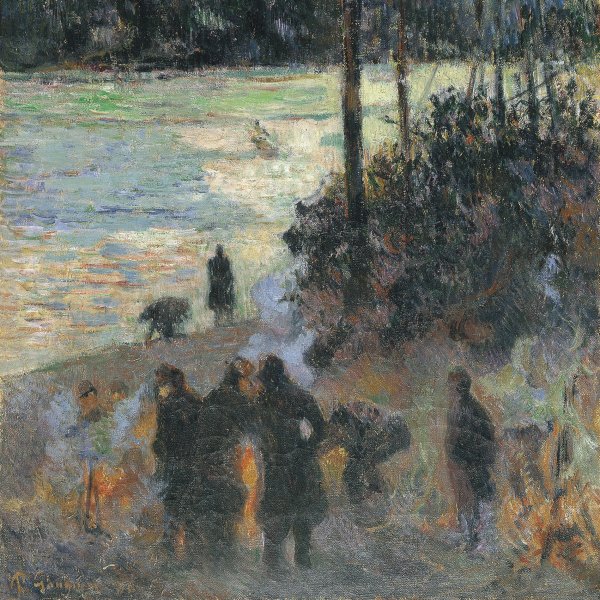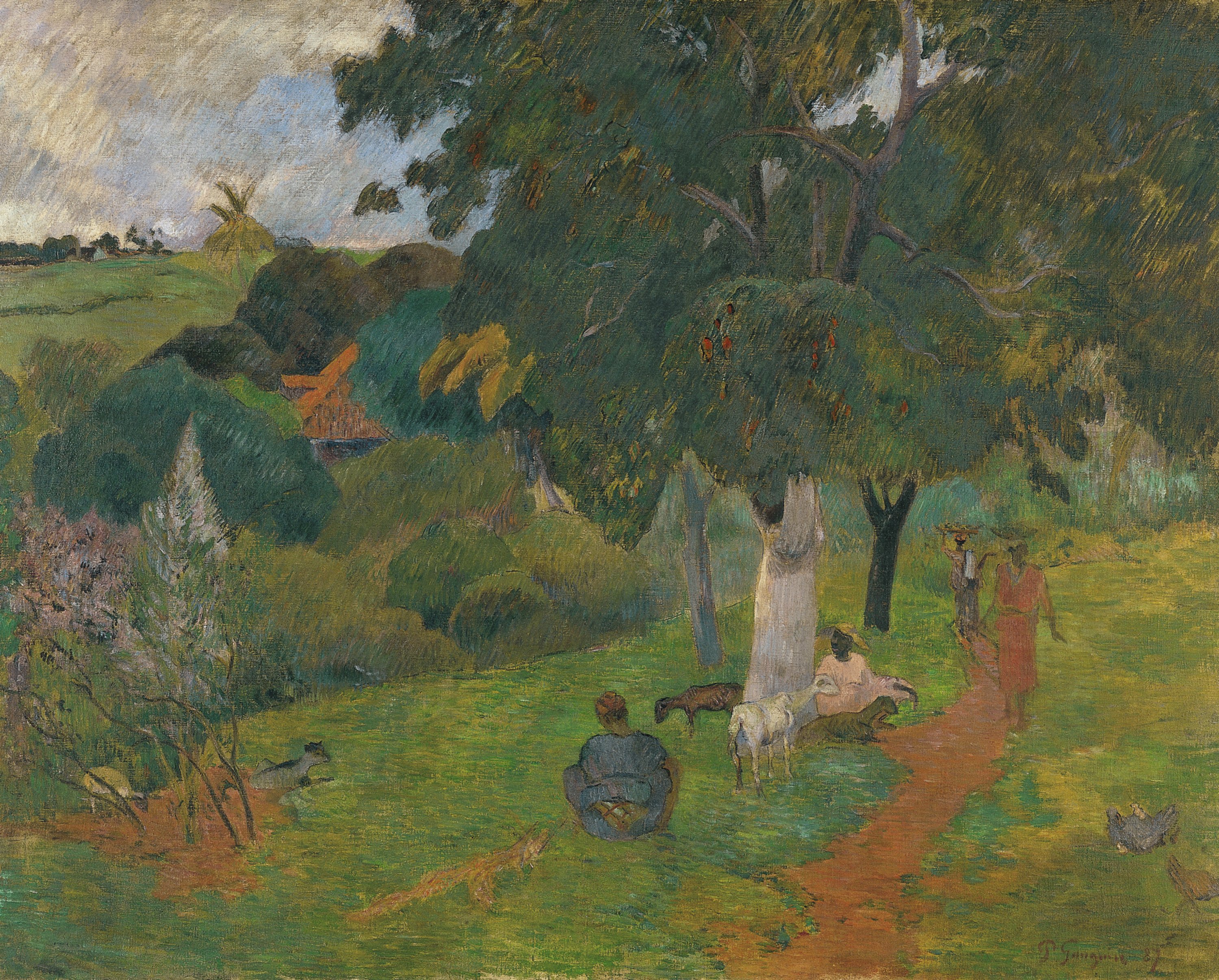Coming and Going, Martinique
1887
Oil on canvas.
72.5 x 92 cm
Carmen Thyssen Collection
Inv. no. (
CTB.1979.88
)
Room F
Level 0
Carmen Thyssen Collection and Temporary exhibition rooms
Gauguin spent nearly four months, from June to October 1887, in Martinique, and was dazzled by the beauty of the island and the richness of the motifs lying before his eyes. Shortly after his arrival, he settled in the company of his friend the painter Charles Laval in a cabin built on a property two kilometres south of Saint-Pierre: "Below us, the sea and a sandy beach to go swimming: and on either side coconut and other fruit trees, wonderful for the landscape painter. What appeals to me most are the people, and every day there are continuous comings and goings of negresses dressed in colourful finery, with endless variations of graceful movements. For the time being I limit myself to making sketch after sketch, in order to become familiar with their character; later I will get them to pose. They chat continuously while they carry heavy loads on their heads; their movements are very particular and their hands play an essential part in harmony with the swinging of the hips".
Seduced by the body language of the natives, Gauguin placed his easel by the side of the path used by the fruit carriers in order to paint their incessant "comings and goings", the title he himself gave to this picture on the occasion of the auction of his works organised in Paris on 23 February 1891 to pay for his trip to Tahiti. The scene describes the to and fro of the women who came every morning to pick the ripe fruit, guavas, mangoes and coconuts, which they carried in baskets balanced on their heads to the market in Saint-Pierre. From the notes taken by a friend of Laval, Albert Dauprat, those comings and goings took place every day in the "fruit-growing" properties, where they also bred some goats, sheep, hens and pigs.
The precise site of Comings and Goings has not been identified but it is likely that it is a scene created from real elements, perhaps even seen within the property where Gauguin lived. The artist had made some sketches and more elaborate pastels of people and animals which he later added to the landscape probably painted in his studio. This method of re-composition enabled him to distance himself from the naturalism advocated by the Impressionists and to produce a space without depth, characteristic of Japanese prints. During this period of experiments, he used oblique brushstrokes, typical of Cézanne, which give both a structure to the shapes and a vibrant texture to the painted surface.
Men and women, goats, sheep and hens on the side of the road take up a limited space in the painting, which is essentially dedicated to the landscape. In it, the vegetation is depicted as large masses, similar to a tapestry of interwoven dark and intense colours, which are very decorative. Vermilion patches burst here and there among the different shades of green, while the laterite path crossing the meadow attracts the eye towards the fruit carriers, the main subject of the painting.
Gauguin brought back a dozen finished paintings from his stay in the West Indies, «four of which with much better figures than those of the Pont-Aven period». Comings and Goings, undisputedly one of his most beautiful paintings from Martinique, belonged from 1891 to Degas, who kept it for his whole life. The painting then passed into the collection of the Duchess of Malborough, who jealously kept it hidden from the eyes of experts and art lovers alike until 1979.
Isabelle Cahn
Seduced by the body language of the natives, Gauguin placed his easel by the side of the path used by the fruit carriers in order to paint their incessant "comings and goings", the title he himself gave to this picture on the occasion of the auction of his works organised in Paris on 23 February 1891 to pay for his trip to Tahiti. The scene describes the to and fro of the women who came every morning to pick the ripe fruit, guavas, mangoes and coconuts, which they carried in baskets balanced on their heads to the market in Saint-Pierre. From the notes taken by a friend of Laval, Albert Dauprat, those comings and goings took place every day in the "fruit-growing" properties, where they also bred some goats, sheep, hens and pigs.
The precise site of Comings and Goings has not been identified but it is likely that it is a scene created from real elements, perhaps even seen within the property where Gauguin lived. The artist had made some sketches and more elaborate pastels of people and animals which he later added to the landscape probably painted in his studio. This method of re-composition enabled him to distance himself from the naturalism advocated by the Impressionists and to produce a space without depth, characteristic of Japanese prints. During this period of experiments, he used oblique brushstrokes, typical of Cézanne, which give both a structure to the shapes and a vibrant texture to the painted surface.
Men and women, goats, sheep and hens on the side of the road take up a limited space in the painting, which is essentially dedicated to the landscape. In it, the vegetation is depicted as large masses, similar to a tapestry of interwoven dark and intense colours, which are very decorative. Vermilion patches burst here and there among the different shades of green, while the laterite path crossing the meadow attracts the eye towards the fruit carriers, the main subject of the painting.
Gauguin brought back a dozen finished paintings from his stay in the West Indies, «four of which with much better figures than those of the Pont-Aven period». Comings and Goings, undisputedly one of his most beautiful paintings from Martinique, belonged from 1891 to Degas, who kept it for his whole life. The painting then passed into the collection of the Duchess of Malborough, who jealously kept it hidden from the eyes of experts and art lovers alike until 1979.
Isabelle Cahn

